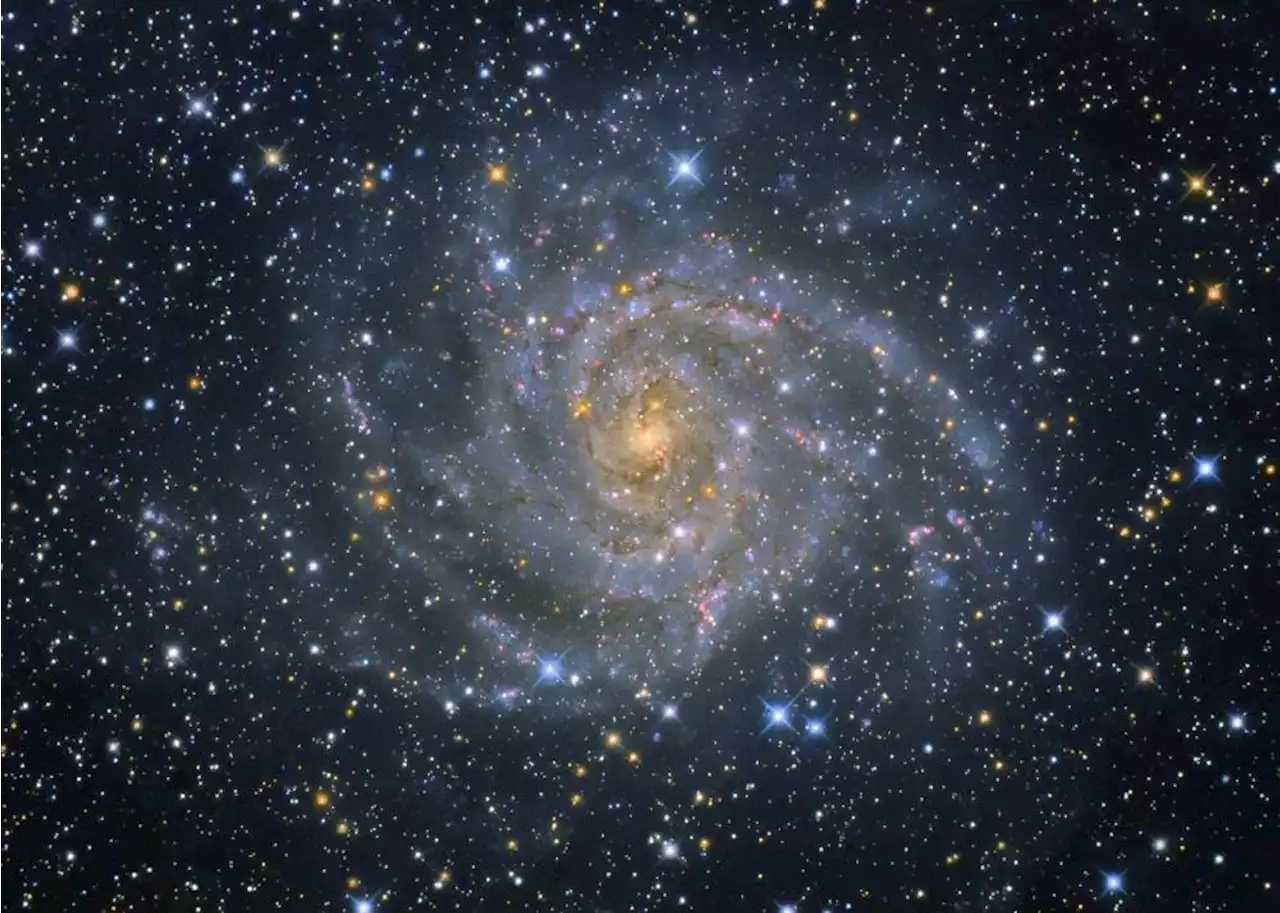🔄FROM THE ARCHIVE: The universe is awash in islands of matter — some 100 billion galaxies make up the basic building blocks of the cosmos.
On the evening of Oct. 4, 1923, near Los Angeles, a young astronomer got into his car and began a motorized trek up to Mount Wilson. There, he arrived at the observatory that housed the 100-inch Hooker Telescope, at the time the largest telescope in the world.
His observing time over, he returned to his office to analyze the catch. Suddenly, Hubble made an astonishing realization: The nova was not a nova at all, but a particular type of star that changed its brightness, a Cepheid variable. Checking earlier plates, he was able to confirm that, and he realized that the star’s faintness had incredible implications.
NGC 4565 in Coma Berenices is the brightest and most prominent galaxy in our sky that is oriented perfectly edge-on to our line of sight. We see its disk as a thin, silvery needle. Some 57 million light-years off, it lies in the Virgo Cluster and has a prominent central bulge, suggesting it may be a barred spiral.
The last generation of extragalactic astronomy has moved into far more sophisticated analyses than cataloging. By using the Hubble Space Telescope, astronomers have estimated that some 100 billion galaxies must exist in the cosmos. And the number may be much greater than that. Probably some 2 trillion galaxies existed in the early universe, but it seems clear that galaxies near each other are drawn together by gravity and combine over cosmic time.
The galaxy’s disk is encapsulated by a halo of a small number of stars, along with huge spheres of ancient stars called globular star clusters, and a big envelope of dark matter. Astronomers don’t yet know what dark matter consists of, but they know it is there because of the gravitational influence it has on the visible matter they can observe.The weirdly distorted elliptical galaxy NGC 474 in Pisces lies at a distance of 100 million light-years.
Most of the Virgo Cluster galaxies contain supermassive black holes in their centers. M87 is quite an example. Whereas the Milky Way’s central black hole weighs in at 4.3 million solar masses, the colossal black hole inside M87 contains an estimated mass of 5 billion to 7 billion suns, some 1,000 times more massive than ours.
By the end of the 1980s, astronomers had identified the Great Wall, a sheet of galaxies measuring 500 million light-years across. More recently, the Sloan Digital Sky Survey uncovered the Sloan Great Wall, an assemblage of galaxies at least twice the size of the Great Wall, which covers a long dimension of some 1.4 billion light-years.
Singapore Latest News, Singapore Headlines
Similar News:You can also read news stories similar to this one that we have collected from other news sources.
 4 Taco Chains That Use 100% Pure BeefIf you prefer the beef in your tacos to be 100% real beef, then make sure to stick with these popular taco chains.
4 Taco Chains That Use 100% Pure BeefIf you prefer the beef in your tacos to be 100% real beef, then make sure to stick with these popular taco chains.
Read more »
 Over 24,000 people evacuated from Alberta after more than 100 wildfires rage across regionOver 24,000 people were forced to evacuate their homes in the Canadian province of Alberta as unusually warm and dry weather has sparked more than 100 wildfires across the region.
Over 24,000 people evacuated from Alberta after more than 100 wildfires rage across regionOver 24,000 people were forced to evacuate their homes in the Canadian province of Alberta as unusually warm and dry weather has sparked more than 100 wildfires across the region.
Read more »
Kinney County deputies found over 100 migrants hiding in a train in southwest TexasThe Kinney County Sheriff’s Office reported that between 100 to 150 migrants were found...
Read more »
 B & GC | The 100 Best Denver Bars We Can't Live Without | WestwordFrom classic dives to modern cocktail lounges, these are the best bars in Denver to drink, meet with friends and make memories.
B & GC | The 100 Best Denver Bars We Can't Live Without | WestwordFrom classic dives to modern cocktail lounges, these are the best bars in Denver to drink, meet with friends and make memories.
Read more »
 Some 25,000 flee as over 100 wildfires burn in Canada's AlbertaThousands more told to be ready to leave on a moment's notice as western Alberta province witnesses 'unprecedented situation', with fires destroying some 122,000 hectares so far.
Some 25,000 flee as over 100 wildfires burn in Canada's AlbertaThousands more told to be ready to leave on a moment's notice as western Alberta province witnesses 'unprecedented situation', with fires destroying some 122,000 hectares so far.
Read more »
 The 100 best albums of the 21st centuryHere's a look at the best albums released since 2000.
The 100 best albums of the 21st centuryHere's a look at the best albums released since 2000.
Read more »
